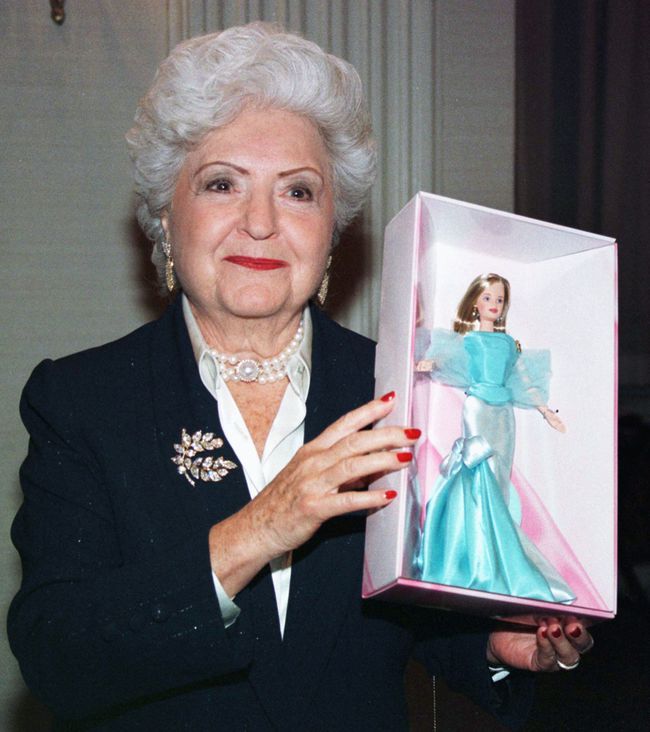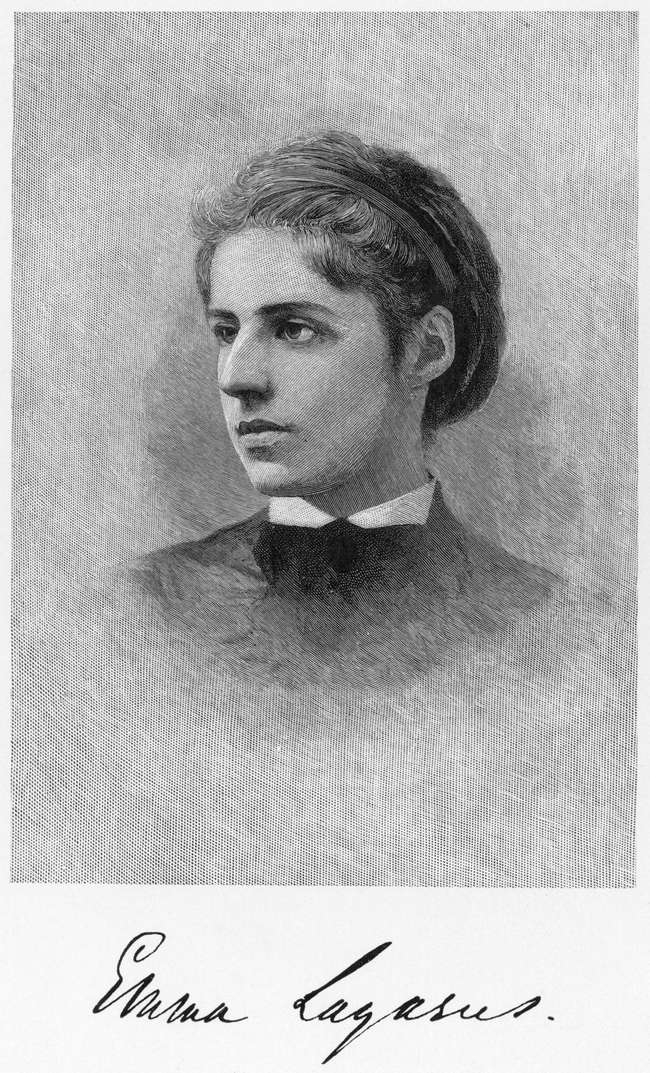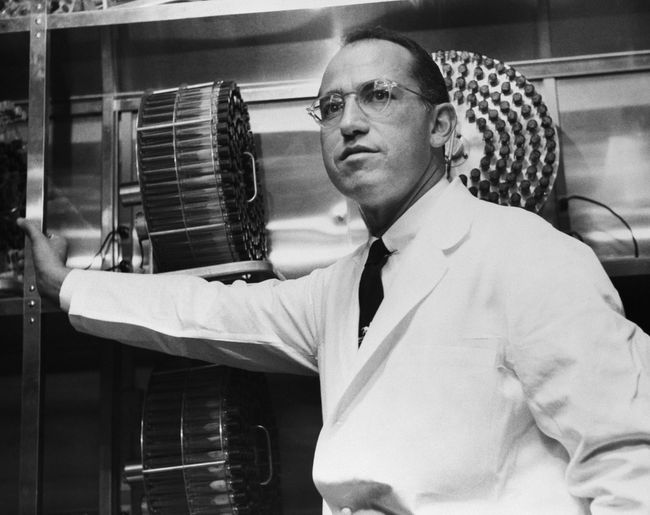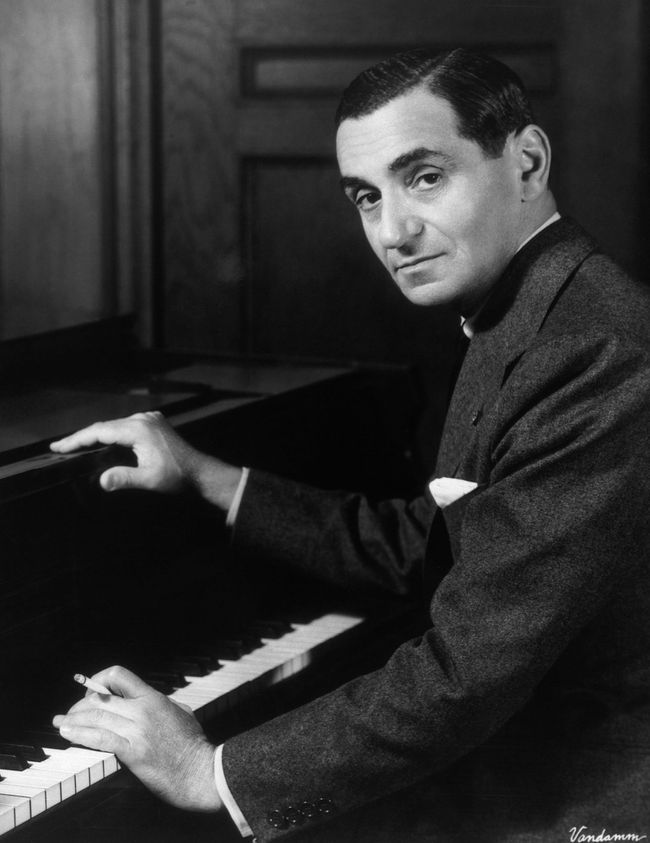
In 2006, then-president George W. Bush first declared there be a Jewish American Heritage Month. The announcement called for May to be a time when we recognize of more than 350-years of contributions made by the Jewish people to American culture. Yet this month of recognition is still not very well known. And the role that Jewish people have played in American history is barely taught in schools. In U.S. History classes today, Jewish American history and culture are most often introduced tied to immigration or America's involvement in the ending of the Holocaust. It's time for that to change.
At a time when anti-Semitic incidents reached an all-time high in 2021, according to the Anti-Defamation League’s latest annual report, it is especially crucial that we honor the contributions of Jewish Americans. From the toy inventors to medical researchers to pop-culture icons, there is so much worth celebrating!
Here Are 7 Jewish Americans in History Our Kids Should Know About
The Toy Inventor: Ruth Handler, aka "Barbie's Mom"

Ruth Handler (1916-2002) married her high school sweetheart in 1938 and in 1945 the couple built a garage workshop where their company Mattel was born. They went from making frames to just toys when their dollhouse furniture became really popular. After watching her young daughter ignore baby dolls to instead play with paper doll cutouts of adult women, Handler decided to invent a better doll to make it even more fun to play these games. On March 9, 1959, Handler and her company, Mattel, introduced Barbie to the world at the annual toy fair in New York. Eleven inches tall, blonde and buxom, Barbie was the first mass-produced doll with adult-like features. Although criticized for promoting an unrealistic body type for impressionable young girls, Barbie and the related products have been wildly popular for decades. Since 1959, more than 800 million dolls in the Barbie world have been sold around the world. Barbie remains one of the top-selling toys in the world. According to Mattel, Barbie has had almost 150 careers and has represented more than 40 different nationalities. To this day, Barbie dolls are sold every three seconds somewhere in the world.
The Social Commentator: Fran Lebowitz

Born and raised in Morristown, New Jersey, Lebowitz is a writer known for her iconic dapper style, New York sensibility, and sardonic social commentary. A high school dropout (who got her GED), Lebowitz entered the 1970s New York City scene working various creative jobs, including writing as a columnist for Andy Warhol's Interview magazine. She also worked briefly for Mademoiselle magazine and then published her first book, a collection of essays entitled "Metropolitan Life" (1978) followed by her next book, "Social Studies," in 1981. Lebowitz remains an important fixture and commentator on all aspects of American cultural life. You might also recognize Lebowitz from the TV show "Law & Order" where she played the character Judge Janice Goldberg. She has also been the subject of two popular Martin Scorsese documentaries, "Public Speaking" (2010) and the recent Netflix docu-series "Pretend Its A City" (2021). At 71 years old, Lebowitz continues to live life on her own terms and is unafraid to speak her mind. Her many famous one-liners include:
"A book is not supposed to be a mirror. It's supposed to be a door."
"When you leave New York, you are astonished at how clean the rest of the world is. Clean is not enough."
"If you are a dog and your owner suggests that you wear a sweater, suggest that he wear a tail."
"Ask your child what he wants for dinner only if he's buying."
The Legendary Supreme Court Justice: Ruth Bader Ginsburg

Thanks to her dedication to justice and rights for all Americans, Ruth Bader Ginsburg (1933-2020) remains an icon and source of inspiration for many Americans devoted to justice and equity for all Americans. Born in a low-income, working-class Brooklyn neighborhood, Ginsburg was inspired by her mother's sacrifices and encouragement. After earning an undergraduate degree from Cornell University in 1954, Ginsburg became one of only nine women to attend Harvard Law School. She ignored all the insults—including the dean who told Ginsburg and her female counterparts that they were taking away spots at the school from men—and became the first female member of the Harvard Law Review. In her career before becoming a Supreme Court Justice in 1993, Ginsburg had an impressive array of positions, including law professor at Rutgers University and also at Columbia Law School, and then a judge in the U.S. Court of Appeals. As a Justice, Ginsburg ruled in favor of gender equality, civil liberties, workers' rights, and the separation of church and state. Although she famously said, "My mother told me two things constantly. One was to be a lady, and the other was to be independent," Ginsburg was a consistent progressive vote on the Supreme Court. Before passing away in 2020, her vote helped uphold the Affordable Care Act and she was also instrumental in the historic decision in 2015 that made same-sex marriage legal in all 50 states.
The Poet: Emma Lazarus

Born in New York City, Emma Lazarus (1849-1887) wrote her first poetry at age eleven. She grew up to become one of the first successful and highly visible Jewish American authors. She is most famous for her poem "The New Colossus" (1883). One of the most famous stanzas from this poem, "Give me your tired, your poor, your huddled masses yearning to breathe free," is still considered by many as an expression of one of America's fundamental values related to immigration policy. In 1903, her famous sonnet was cast on a bronze plaque and attached to the inner wall of the Statue of Liberty. Today, the plaque is on display in the Statue of Liberty Exhibit in the Statue's pedestal. In her lifetime, Lazarus advocated for Jewish refugees and advocated for the creation of a Jewish homeland.
The Man Who Stopped Polio: Jonas Salk

Jonas Salk (1914-1995) grew up poor in New York City, but he would go on to become one of the leading scientists of the twentieth century, most famous for creating the polio vaccine. After earning his M.D. at New York University in 1939, Dr. Salk interned at Mount Sinai Hospital and then earned a fellowship at the University of Michigan where he studied flu viruses. Meanwhile, starting in the 1940s into the 1950s, polio—a contagious viral illness that in its most severe form causes nerve injury leading to paralysis—would paralyze or kill over half a million people worldwide every year. In 1947, Dr. Salk took a position at the University of Pittsburgh where he began what would become his history-changing research on polio. He developed a polio vaccine in 1951 and four years later, in 1955, Dr. Salk's polio vaccine was approved for general use. Dr. Salk rightfully became a national hero as the vaccine he developed helped decrease the cases of polio from 57,000 in the United States in 1952 to less than 1,000 cases a decade later.
The Composer: Irving Berlin

In 1924, songwriter Jerome Kern said of Irving Berlin (1888-1989), "Irving Berlin has no place in American music. He is American music." Born Israel Baline in Eastern Russia on May 11, 1888, he and his family moved to New York City in 1893 to escape the pogroms. After his father died, eight-year-old Berlin took to the streets to help his mother make ends meet. He became a singing waiter and started writing his first songs at that time. During World War I, Berlin wrote the musical "Yip, Yip, Yaphank" which featured his hit song, "Oh, How I Hate To Get Up in the Morning." (Berlin was not an early-riser.) Then, in 1938, he introduced his song, "God Bless America," which would threaten to replace the United States national anthem due to its massive popularity. During World War II, Berlin wrote the musical "This is the Army," which would raise $10 million dollars for the Army Emergency Relief. In his lifetime, Berlin wrote more than 900 songs, 19 musicals, and the scores of 18 movies. Berlin is still the top earner among American songwriters thanks to his many cherished classic songs including "There's No Business Like Show Business," "Easter Parade," and "White Christmas."
The Voice: Barbra Steisand

Born on October 24, 1942, in Brooklyn, New York, Streisand spent her formative years dreaming about a career in show business. When she first tried to break into the business after high school, she struggled due to her lack of the typical looks of a starlet. However, her perseverance paid off and she scored her first record deal at age 20. After that, Streisand became a household name. To date, she has sold more than 68.5 million albums in the U.S. and a total of 150 million albums worldwide. She is also the only recording artist to have charted a number one song for each decade from the 1960s to the 2010s. By the late 1960s, Streisand began her film career. She won an Academy Award and Golden Globe for her starring role in "Funny Girl." Among her many iconic films, she starred in "The Way We Were" (1973) opposite Robert Redford. After receiving her second Academy Award for her performance in "A Star is Born" (1976). Streisand became the first woman to write, produce, direct, and star in a film, 1983's "Yentl." Her next turn as director/star was the 1991 hit, "The Prince of Tides" and then "The Mirror Has Two Faces" (1996). Streisand continues to star in films and remains politically active championing many social justice causes. She has received many awards in her lifetime, including the Kennedy Center Honors prize and the Presidential Medal of Freedom. In addition, Streisand is only one of sixteen people who have achieved an EGOT—an Emmy, Grammy, Oscar, and a Tony. It is considered the "grand slam" of show business.
